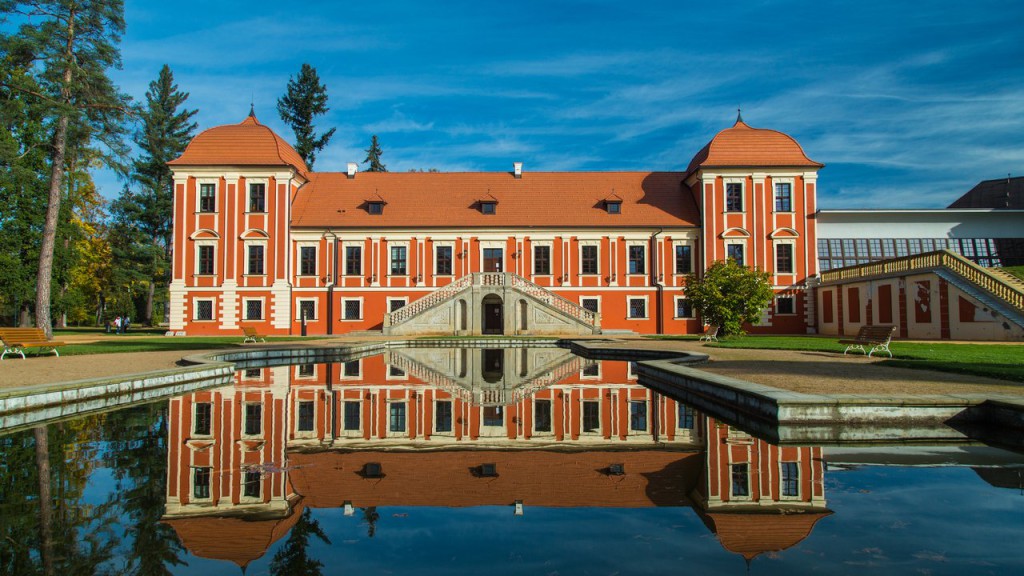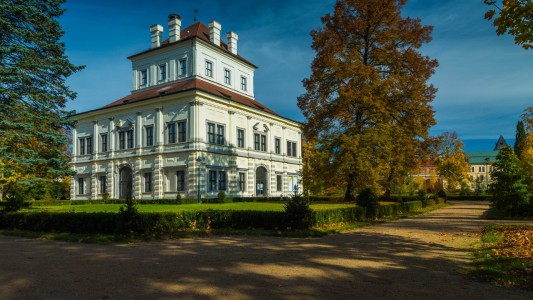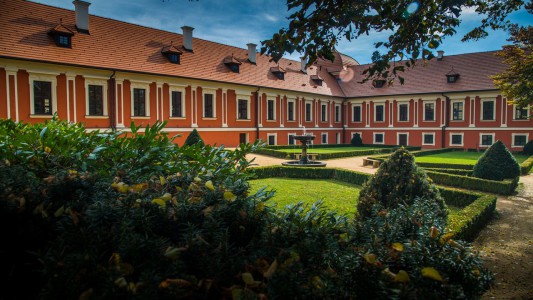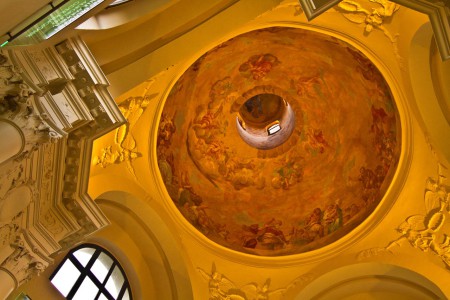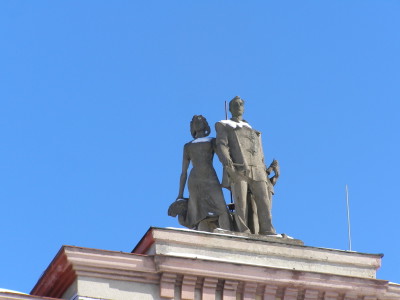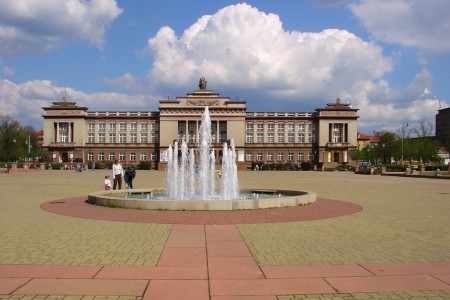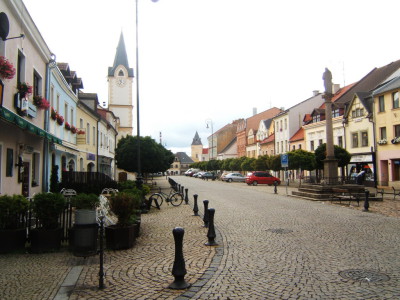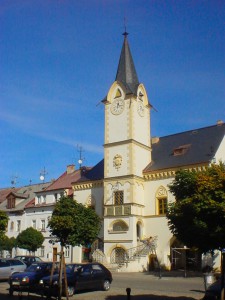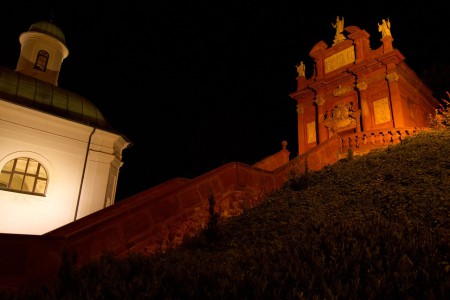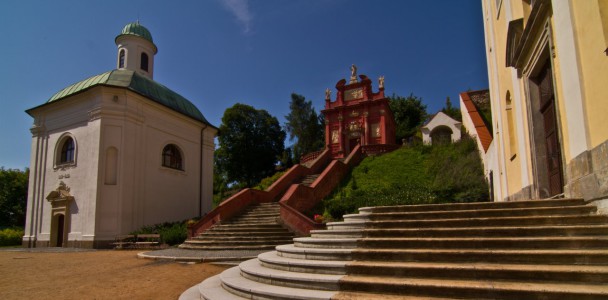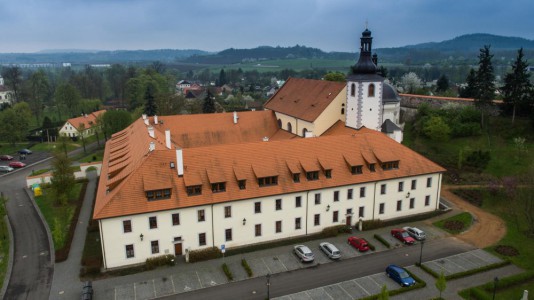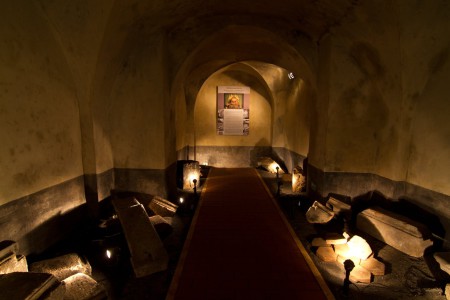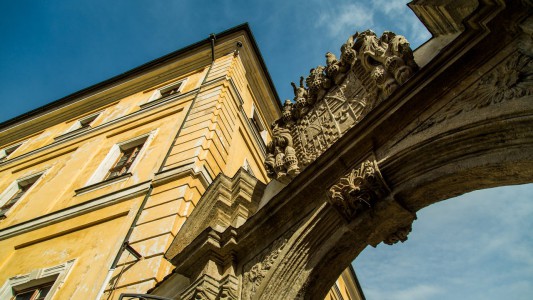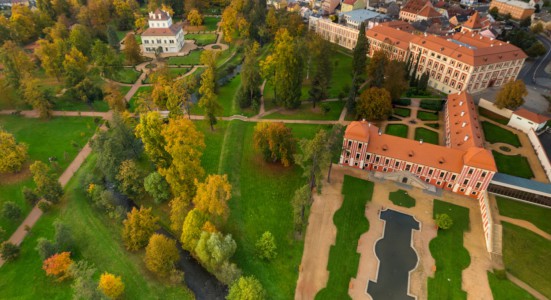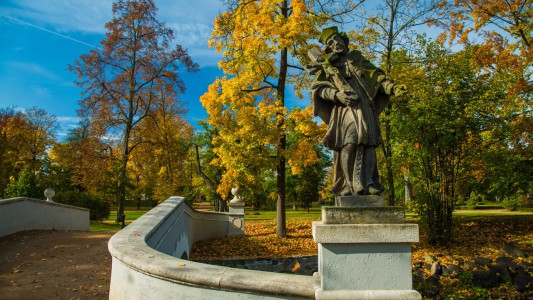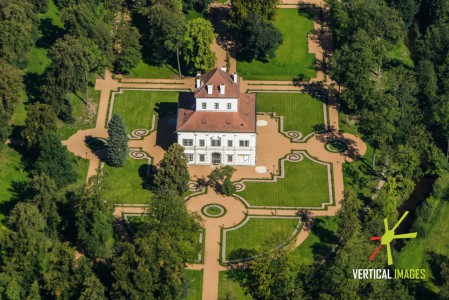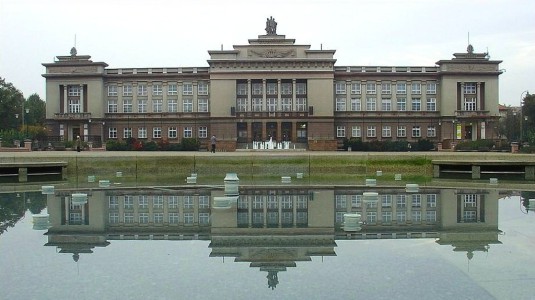The picturesque city known for short as Ostrov (“the island”) is in the foothills of Krušné hory (the Ore Mountains), 10 kilometres northeast of Karlovy Vary – the famous spa town which hosts the Czech Republic’s biggest international film festival.
Though situated in a relatively small area, Ostrov is home to an unusually large mix of architectural styles. Here you’ll find not only a 13th century Gothic church a 17th century grand monastery and grounds, but also a remarkable blocks of flats from the 1950s – considered among the best examples of Socialist Realism architecture in the country. They were built when Ostov grew from 3,000 inhabitants to some 16,000, most of whom worked in the Jáchymov mines nearby.
At the heart of Ostrov’s historic centre is a Gothic-Renaissance Old Town Hall replete with medieval cellars and a late 17th century Baroque column out front, erected after an epidemic of the plague. A few steps from the square is a renovated Renaissance chateau and an adjoining city park – a remnant of the former French garden, once known as the eighth wonder of the world for its complexity and splendour. Julius Francis, the duke of Saxe-Lauenburg, built his folly (summer chateau) in the heart of the garden in 1673.
Another of the city’s historical districts, Posvátný okrsek (the Holy Precinct), is home to a unique 17th century monastery and other sacred buildings, the oldest of which is the octagonal funeral Chapel of St. Anne. Nearby is the Church of the Annunciation of the Virgin Mary, a former Piarist college, and the chapels of St. Florian and Our Lady of Einsiedeln. The entire complex was recently restored, after having been damaged in the 1950s when it also housed an army barracks.
In stark contrast to the centuries old centre is the area known as New Ostrov, which extends far to the north. Meticulously planned and laid out, it is a unique example of 1950’s Socialist Realism – unprecedented in the Czech Republic both in terms of its breath and compactness. In just a few years, a settlement grew on a greenfield site there, at the heart of which is the momentous House of Culture, once dubbed the “miners’ cathedral,” with a large square and a wide boulevard (named in Lenin’s honour), built with visions of massive May Day marches in mind.
There are also unfortunate ties to the notorious Jáchymov uranium mines: prisoners, who often worked under inhuman conditions to extract the radioactive ore at the former grounds of the nearby Škoda Ostrov, took part in the buildings’ construction. The so-called Tower of Death at the adjacent camp for political prisoners, many of them clergymen, has become a symbol of that era.
The chill of the 1950s, however, is now a thing of the past, and Ostov today is colourful city waiting to be discovered by the film industry. Thanks to the initiative of the Karlovy Vary region and local mayor Pavel Čekan, filmmakers can be assured of a warm reception by helpful people who understand the requirements of film production.
“Ostrov is proud of the beauty of its Baroque heritage from the time of the Dukes of Saxe-Lauenburg, while the contrast created by the socialist realism architecture reflects a time in history when uranium was mined in the Ore Mountains,” says Mayor Pavel Čekan, who welcomes filmmakers. “Every part of the city is quite interesting in its own right, and tells their own stories. Come listen to them – we’ll be glad to help you tell your own on screen.”
